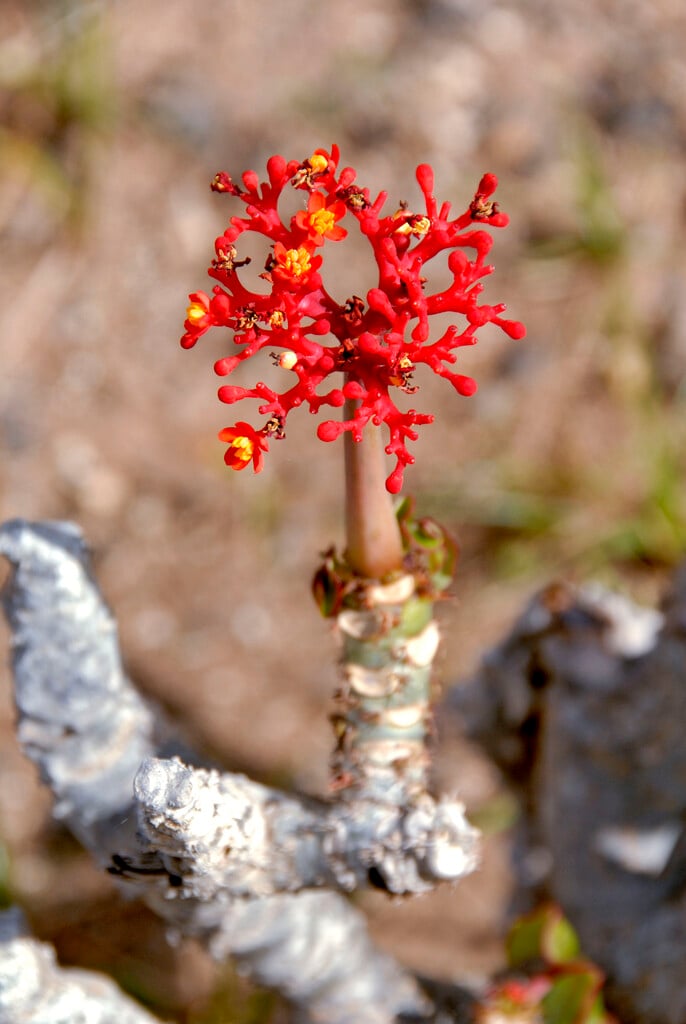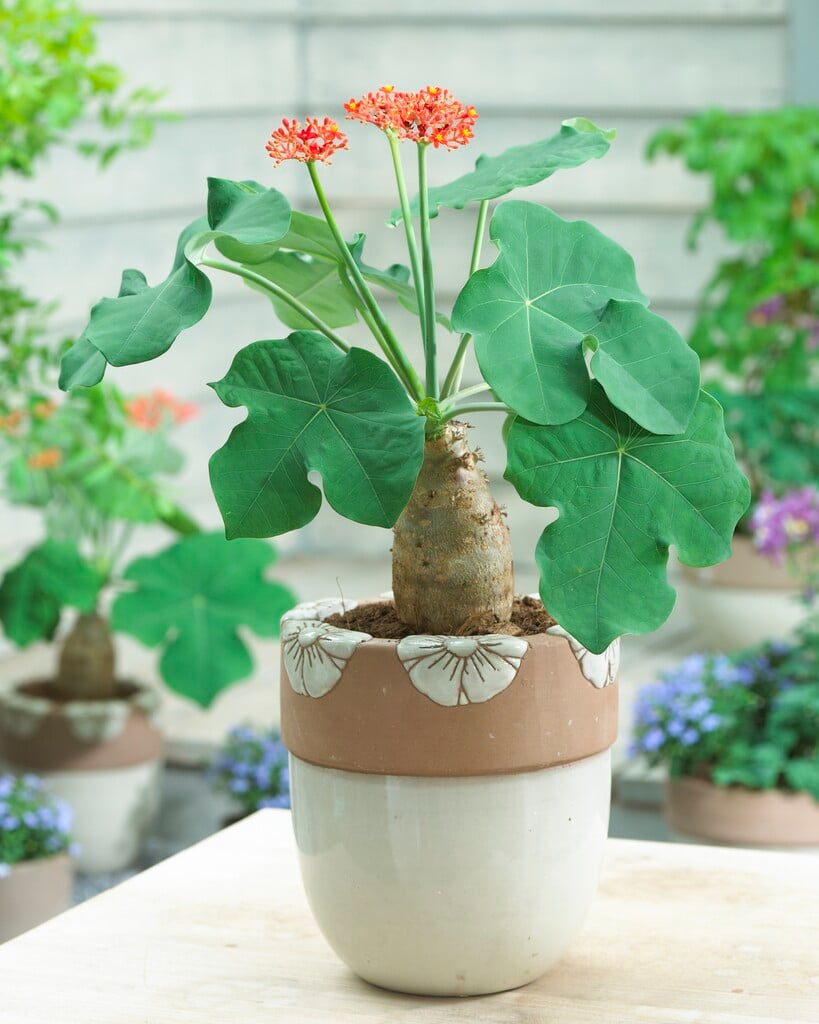Jatropha podagrica
gout plant
A shrubby perennial with a short stout caudex and branched fleshy, spiny stems bearing leathery 3 or 5-lobed leaves, whitish beneath, clustered at the tips, and small bright scarlet flowers in branched terminal clusters in summer
Size
Ultimate height
0.1–0.5 metresTime to ultimate height
5–10 yearsUltimate spread
0.1–0.5 metresGrowing conditions
Moisture
Well–drainedpH
Acid, Alkaline, NeutralColour & scent
| Stem | Flower | Foliage | Fruit | |
| Spring | ||||
|---|---|---|---|---|
| Summer | Red | |||
| Autumn | ||||
| Winter |
Position
- Full sun
- Partial shade
Aspect
South–facing or East–facing or West–facing
Exposure
Sheltered Hardiness
H1BBotanical details
- Family
- Euphorbiaceae
- Native to GB / Ireland
- No
- Foliage
- Deciduous
- Habit
- Bushy
- Potentially harmful
- Harmful if eaten. Wear gloves and other protective equipment when handling Pets (dogs, cats): Harmful if eaten - see the HTA guide to potentially harmful plants for further information and useful contact numbers
- Genus
Jatropha can be perennials or evergreen shrubs, often forming a stout, succulent caudex, with simple lobed or finely divided leaves and small flowers in summer, either solitary or in cymes
- Name status
Correct
- Plant range
- C America
How to grow
Cultivation
Under glass, grow in two parts peat-free, loam-based compost and one part each of leafmould and grit. Provide full light with some protection from hot sun. Water moderately during the growing season and keep dry in the autumn and winter
Propagation
Propagate by seed sown in containers in spring or summer at 24C (75F)
Suggested planting locations and garden types
- Patio and container plants
Pruning
No pruning required
Pests
May be susceptible to mealybugs
Diseases
Generally disease-free
Love gardening
Sign up to receive regular gardening tips, inspiration, offers and more
View our Privacy Policy
Get involved
The Royal Horticultural Society is the UK’s leading gardening charity. We aim to enrich everyone’s life through plants, and make the UK a greener and more beautiful place.

